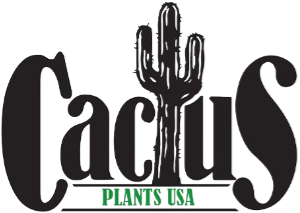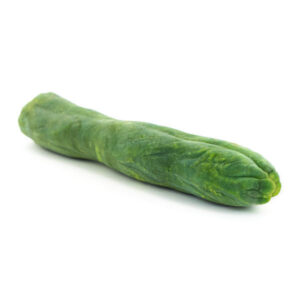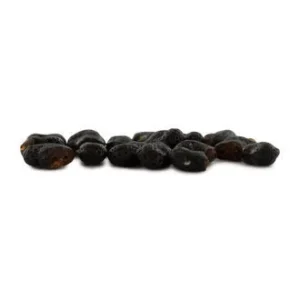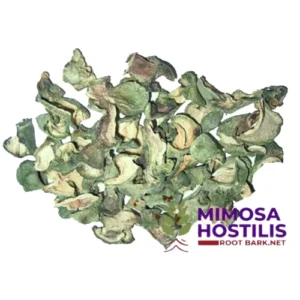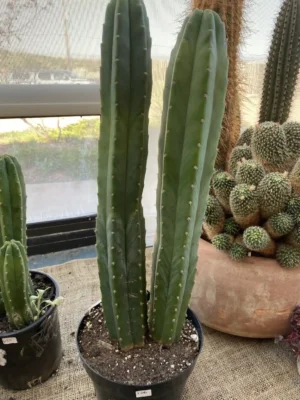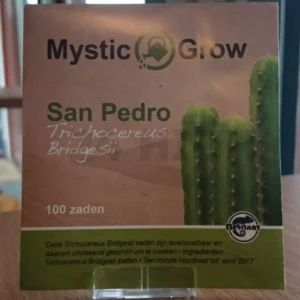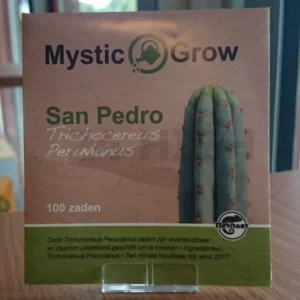Peruvian Torch Cactus
Peruvian Torch Cactus For Sale
When the Peruvian Torch Cactus For Sale reaches a certain height, it topples, throwing bits of mescaline-containing cacti over the barren rocks of the high Andes. Soon, roots appear, and the cactus begins to send horizontal projections over cliffs in quest of new chances. Because of their green-blue, spiky serpentine limbs and legendary power, some refer to these ancient entities as “dragons.”
The Peruvian Torch (Echoniopsis peruviana) is a kind of cactus known as “San Pedro” or “Huachuma.”Peruviana is a peculiar plant that has earned a reputation in South America during thousands of years of usage. Cacti, like people, have individual personalities established through connections with land and humans, much like the patchwork of traditions dispersed throughout the Andes peaks and valleys.

Showing all 9 results
-
Bolivian Torch Cactus, Mescaline, Peruvian Torch Cactus
Price range: $27.95 through $32.95 Select options This product has multiple variants. The options may be chosen on the product page -
Huachuma Cactus, Mescaline, Peruvian Torch Cactus
Price range: $9.95 through $49.95 Select options This product has multiple variants. The options may be chosen on the product page -
Mescaline, Peruvian Torch Cactus
Price range: $60.00 through $90.00 Select options This product has multiple variants. The options may be chosen on the product page -
Price range: $68.00 through $348.00 Select options This product has multiple variants. The options may be chosen on the product page
-
Bolivian Torch Cactus, Huachuma Cactus, Mescaline, Peruvian Torch Cactus, Peyote Cactus
Price range: $26.50 through $89.50 Select options This product has multiple variants. The options may be chosen on the product page
Showing all 9 results
Cactus Peruvian Torch
The Cactus Peruvian Torch is one of the most well-known members of the San Pedro family, second only to the cactus with the “official” San Pedro name, Echoniopsis pachanoi. Because plant identification is a specialized activity, most people mix Peruvian Torch in with hundreds of other columnar mescaline-containing cacti.
However, differentiating between species is critical. Not because of the (unproven) legend that the Cactus Peruvian Torch is 10 times more powerful than its relatives. More pressingly, the Peruvian Torch and other San Pedro cactus are in jeopardy, as are Indigenous customs handed down through generations.
What is the Cactus Peruvian Torch?
The Cactus Peruvian Torch is indigenous to Peru’s Andes Mountains in northern Peru. The cactus is known by numerous regional names, including Gigantón in Ancash, Espino in Lima, and Cure in Arequipa, to mention a few. The spiky blue-green columns may reach a height of seven meters and produce huge, white, sweet-smelling blooms as well as tasty fruits. Some survive for more than a hundred years, with their bases mimicking tree trunks as they mature.
Cactus Peruvian Torch
Cactus Peruvian Torch has a long history of usage as a therapeutic herb in curanderismo traditions. The treatment of wounds, cattle sickness, and baldness is common knowledge in communities. Other uses for the plant exist, although they are not well known. The Peruvian Torch Cactus For Sale, on the other hand, has a well-deserved reputation as a strong type of San Pedro. Curanderos often use Peruviana to treat a wide range of diseases, from physical to emotional to spiritual.
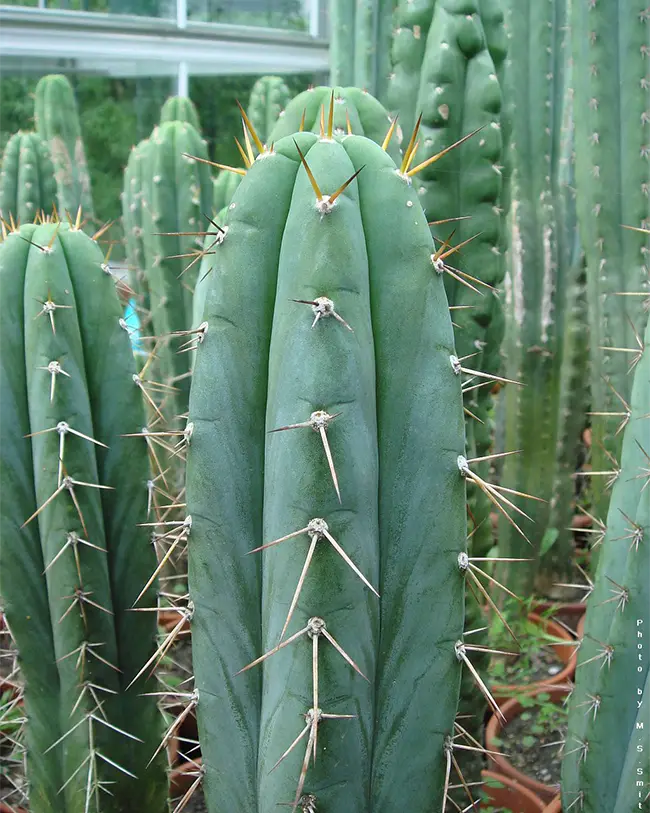
The therapeutic benefit of Peruvian Torch is commonly linked to its mescaline content, although in Peru, it is valued for more than alkaloids. For nearly 30 years, Huachumero Josip Orlovac del Rio has worked with the cactus. Orlovac remembers his siblings getting high on the cactus as kids, laughing in the yard, or carrying it to Lima celebrations.
“This isn’t a drug!” his grandpa chastised. “It’s not something we use to escape.” As a youth, he started to eat the cactus and began to learn with a Northern Maestro, Felipe Pereda. Orlovac maintains this point of view, stating that if he asked his kid to drink it, he would say, “I don’t need to drink it; it’s medicine, and I’m not sick.”
Origins and History of Peruvian Torch
Cacti developed 30 to 40 million years ago when the earth’s climate changed, creating a need for plants that could withstand lengthy periods of drought. Cacti originated in South America and have shared the continent with humans for at least 14,800 years.
The earliest evidence of human association with holy cactus, according to our present understanding, is 3000-year-old sculptures on the structures of Chavn de Huántar in Northern Peru. San Pedro cactus were cherished and taken far beyond their native range, as shown by ancient ruins and engravings dispersed throughout the continent. It’s unclear what function the cactus performed. Nonetheless, stone sculptures of half-human, half-animal creatures by San Pedro raise questions regarding cult or oracle rites.
The Spanish came after the Incas, who replaced the Chavin civilization. The Spanish noted the usage of San Pedro upon arrival but repressed it. Catholic missionaries worked tirelessly throughout the continent to replace traditional medicine and worship with Catholicism. They are successful in most cases, steadily weakening usage. However, in the north, Orlovac tells me that pockets of curanderos continue to use cacti in traditional methods, with Peruvian Torch being a key part of the arsenal today.
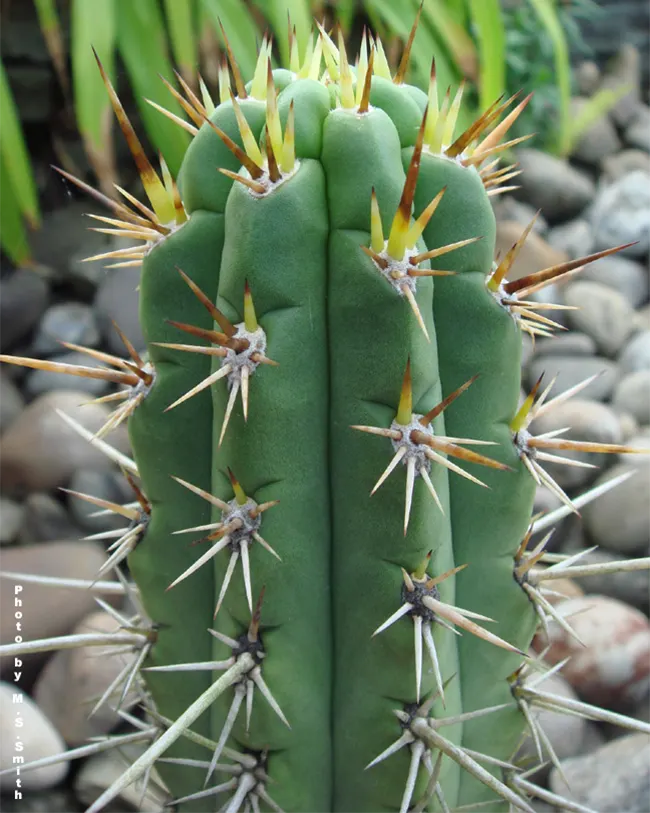
Briton Rose, a cactus taxonomist, obtained the Peruvian Torch Cactus For Sale at 2100 meters in the Andes in 1914 and named the species “peruviana” in his book The Cacteace. The genus was originally named “Trichocereus,” but after decades of debate, taxonomists altered the name to “Echonopsis.” Cactus lovers started harvesting unique cactus genomes from isolated valleys in the 1970s, launching an underground hallucinogenic business. In most of the Western world, it was legal to cultivate psychoactive cacti, but it was illegal to prepare them.
Until the 1990s and early 2000s, holy cacti commerce generally went unnoticed in the worldwide North and South. The business of psychotourism has grown. Peru’s mystery drew visitors to Cusco and the Sacred Valley, where they hiked Machu Picchu, hoping to get a glimpse of the past. What better way to do this than with a psychedelic cactus?
Ceremonies have been a feature of Peruvian excursions and retreat experiences in the years after San Pedro. Healing and transformation tales are not easily forgotten, and people are naturally eager to share them. Bags of dried cactus are becoming popular souvenirs among tourists. The Peruvian tortoise makes up a vast portion. The proliferation of these activities, however well-intentioned, poses a danger to another long-held custom.
Peruvian Torch vs. San Pedro
The plot of “San Pedro” isn’t centered on a single plant. The majority of rituals performed by seekers in the Sacred Valley use a different cactus than what is known as San Pedro. The term “San Pedro” refers to columnar mescaline-containing cacti in general, but it refers to a particular species—Echinopsis pachanoi. Pachanoi, however, is not a regular sight in Cusco’s marketplaces and retreats. According to conservationists, the majority of the plant material eaten is peruviana—Peruvian Torch.
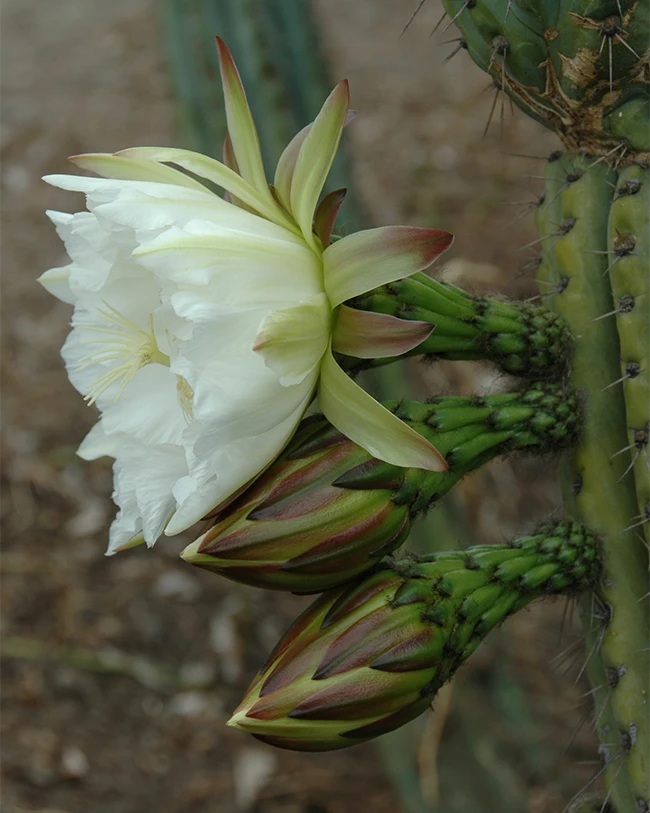
What’s the point of bothering with Latin names and distinctions? Cactus people, like cannabis strains at a dispensary, are continually looking for the newest genetics. Various alkali concentrations provide various effects. There have been rumors and studies for years about which plant, Peruviana or Pachanoi, is stronger. Other species and subspecies named by botanists or curanderos include Bridgesii, Cuzcoensis, Sanantaenses, Puquiensis, and others.
To date, lab studies show that mescaline concentrations and other phytochemicals vary greatly across specimens. Online stories suggested one thing, while independent cactus experts like Keeper Trout said another: Trout called holy cactus categorization methods “hopelessly muddled,” throwing more doubt on lab conclusions.
How to Identify Peruvian Torch
Orlovac has been gathering and devouring San Pedro cactus for over thirty years, as well as cultivating a garden of over 4,000 plants on the site where we grew up in Chaclacayo, Lima. Orlovac started the garden twenty years ago to save particular cactus brought to him by his grandpa in Arequipa that were on the verge of extinction.
When I inquire how to identify a Peruvian Cactus For Sale, he initially tells me to check for three to four-inch thorns—and then things get difficult. The presence or absence of spines in a cactus may transform its botanical categorization into pachanoi or peruviana, which seems simple enough until he recalls planting a cutting of an 80-year-old Peruviana from the wild. The thorns vanished after seven years of domestication, and the cactus clone is to be seen as pachanoi in the view of many specialists who suppose
“People like simple and predictable,” says Keeper Trout, author of numerous books on cactus identification. “But that only works when reality allows it.” He also observes that Peruviana is significantly less prevalent in plant nurseries in the United States than Pachanoi and is often skinnier than those found in the wild.
He also adds that seedlings would be greener and have weaker spination than adults. Trout cautions that one should “look at a lot of pictures and, ideally, also live plants.” He tells me that it will get easier with experience, but adds that Peruviana is “grandfathered and lacks what is considered acceptable for a description today.” A botanical description like this would differentiate between sterile plants and may contain flowers, fruit, or phytochemicals.
“As curanderos, we don’t care if it’s Pachanoi or Peruviana,” Orlovac laughs after describing where to locate all the Echonipsis in Peru off the top of his head. It is not available to us.” He emphasizes that botanists, unlike curanderos, do not create classes based on medical usefulness. Botanists often pick names depending on geography. “For us,” he goes on to explain, “we have ‘macho’ for those with spines and ‘hembra’ for those without.” And, since macho and hembra may be found in many different areas, he concludes, “You need to know your plants,” pointing out the variety of non-mescaline-containing lookalikes.
Knowing plants, according to Orlovac, involves more than just knowing their botanical names. For him, it’s a connection with a spirit, not a name, as well as the mountains, valleys, and lakes where it originates from. Latin names and alkaloids are never the end of the narrative for people who know plants.
Psychoactivity of Peruvian Torch and San Pedro
Laurel Anne Sugden is an Interdisciplinary Studies Ph.D. candidate at UBC. She is also the wife of Orlovac. When I ask her what the difference is between San Pedro and Peruvian Torch (E. Peruvianus), she informs me that Peruvian Torch (E. Peruvianus) is “deeper, more emotional, more electric, and darker,” quickly adding, “but not negative.” Sugden’s background is in molecular biology and the study of Huachuma’s biocultural importance. It’s not your standard researcher’s response, and it’s clear how much more it reveals about a plant than the distance between cactus areoles.
Peruvian Cactus For Sale
San Pedro (E. Pachanoi) is then described as “full of light, joyful, beautiful, sensual, sparkly, and joyful.” When I inquire about mescaline, she says that Peruvian tortch is often stronger, “even if someone doesn’t know how to cook it.”
In terms of mescaline content, some published studies prefer San Pedro over Peruvian Cactus For Sale. Keeper Trout agrees, but adds, “Even when correctly identified, some peruviana are good mescaline containers, and others are not.” He goes on to clarify, “Botanists do not presently differentiate between the chemical races that appear to exist with Peruviana.”
In terms of psychoactivity, Trout warns that we don’t even know how mescaline works, much less the other unstudied alkaloids found in high quantities in certain cacti. “This area needs to be worked out in a multidisciplinary way involving both botanists and chemists,” he said.
According to Orlovac, a phytochemistry sample tells us as much about a plant as a blood sample does about a person. He then talks about many sessions of drinking holy cacti, delving into the complexities of utilizing the cactus in properly dosed amounts for different therapeutic procedures. While he recognizes San Pedro as powerful, he also claims that Peruvian Torch is the most powerful. He claims that one must be willing to “ride the dragon” across the Andes, focusing on the Peruvian Torch’s power to provide visions, energy purification of the body, and a connection to emotions and traumas.
Peruvian Torch Conservation
Despite its fame, Peruvian Torch is subject to the same modern-day stresses as any other plant: cattle grazing, highways, mining, and climate change, which disrupt the plant’s precise water needs.
But the Peruvian Torch is under special scrutiny: the cactus is a popular option among psychonauts since it is regarded as more powerful. Facilitators and retreat centers use massive amounts of cacti each year, and the Peruvian Ministry of Environment has produced a study on the export industry’s legal cactus export of 40 tons between 2009 and 2013. The current state of illicit exports is likewise uncertain. Although the Peruvian government has not imposed any restrictions, the study lists both the Peruvian Torch and San Pedro as “endangered.”
Cacti are no longer used as medication by many people due to restricted economic options. A few bucks is worth the labor-intensive process of cutting and processing the plants into powder and transporting them to local marketplaces, where merchants sell them for as little as a few dollars per kilogram. Some people purchase it as a trip keepsake. Others buy in quantity to export the cactus.
The unassuming green powder is labeled as “cactus flour,” “sea shells,” or local herb names like “organic aloe vera.” The bags readily pass through customs and may be sold for hundreds of dollars per kilogram online. Other powder is sent directly to facilitators, who organize ceremonies all over the globe.
Back in Peru, Orlovac remembers a traditional maestro dying in poverty from disease in the country’s north. There are no schools, literature, or healthcare in the towns where the cactus grow naturally. Orlovac compares this with facilitators in the United States, where some easily make $1000 each ceremony with no money going back to the people, culture, and land that provide the medicine. “It is outside of balance,” he continues, before adding, “something that we learn from San Pedro is balance.”
An anonymous facilitator in the United States explains via Signal that she provides individual San Pedro sessions for “comfort through grieving, to open my heart and keep it open,” and to “strengthen my ability to love and be loved.” She explains how to purchase cacti online, describing photographs in the catalog of hundreds of cacti thriving in nurseries in the Western states’ sunlight. “A lot are family-owned,” she tells me, “and the kids help.”
Distributors grow well-known genetics from seeds they collected in South America in the early 1900s. A potted cactus may be sent, and she claims wholesalers have an “adequate supply.” Owning the plants is legal in the states, but processing them is prohibited unless you live in a decriminalized region.
The Ethical Use of Sacred Cacti
Orlovac underlines to me via WhatsApp from a loud Lima café that the actual secret to dealing with holy cactus is a genuine connection with the plant, land, and lineage that supports it. Sugden argues that a plant’s soul derives from the place it grows on, its interaction with the earth, hummingbirds, and bees, and how well it is loved. She highlights the reciprocity of plant-human connections. While it is obvious that holy cacti have a lot to teach us, Orlovac adds that “the plant is open to learning from us as well.”
Huachuma Collective was created by Orlovac, Sugden, and Felipe Pereda Llanos, a Chimbote and Coishco curandero, to build the interaction between plants and humans. Sugden notes in the organization’s newsletter that some people attempt to “save” the plants by completely disconnecting from them. She recognizes that the motivations for sustainability are admirable, but abstaining from the plant, commercial monocultures, or synthetic mescaline do not allow for a reciprocal interaction. “Reciprocity is not a one-way street,” she said.
Huachumeros make prayer offerings to the lakes and mountains when gathering in the wild, using coca, flowers, and chicha. Outside of dwellings, the plant is revered as a guardian and bringer of good fortune. Huachuma Collective is unequivocal:
Rather of a ban on cactus eating, the Huachuma Collective has promised to plant one million cacti. Donations finance the initiative, which promotes flora and education in Andean communities as a non-profit. The bio-cultural program aims to rejuvenate not just plants but also the value of plants in communities for economic and spiritual development.
The team donates ready-to-plant cactus to the Northern Peruvian partner towns of El Castillo, Barbaco, Chankillo, and Tortugas Beach. Pereda conducts classes and offers his talents; one individual may seek Pereda’s assistance with back discomfort, while another may request that he attend to an elderly senior. They claim that the method removes the stigma associated with curanderismo and elevates the skill in the eyes of adolescents, while young cacti find homes in their original nation.
“Cultivation is the solution,” Sugden argues. Anyone may have a connection with San Pedro, which grows in a pot on their windowsill. She says, “Every person who drinks San Pedro should grow the plant if they have the opportunity.”
“Grow medicine, serve medicine,” adds Orlovac, urging practitioners to have the patience to cultivate their own. Orlovac studied for 20 years before serving San Pedro, which gives a garden plenty of time to flourish. Huachuma Collective recommends traditional Peruvian curanderos that deal with ethically sourced herbs to anyone looking for ceremonies.
The Huachuma Collective also advocates a boycott of dry powder. It misses the plant’s complete experience. The powder comes from a holy plant that is both endangered and unprotected. The extraction procedure is unlawful and provides no benefit to Peruvian populations living in severe poverty.
The use of wild San Pedro cactus as a sustainable supply of mescaline is a hoax, and the remaining habitat is diminishing on a daily basis. Sharing this knowledge is important, but Huachuma Collective’s goal eventually entails putting skin in the game—rebuilding connections with hands in the soil cultivating cactus. Needless to say, “we cannot truly protect another being until we love them, and we cannot love them until we know them.”
Author’s note: If you care about San Pedro and Peruvian Torch, please give here and follow Huachuma Collective on Instagram.
*The views expressed in this article are not necessarily those of DoubleBlind.
